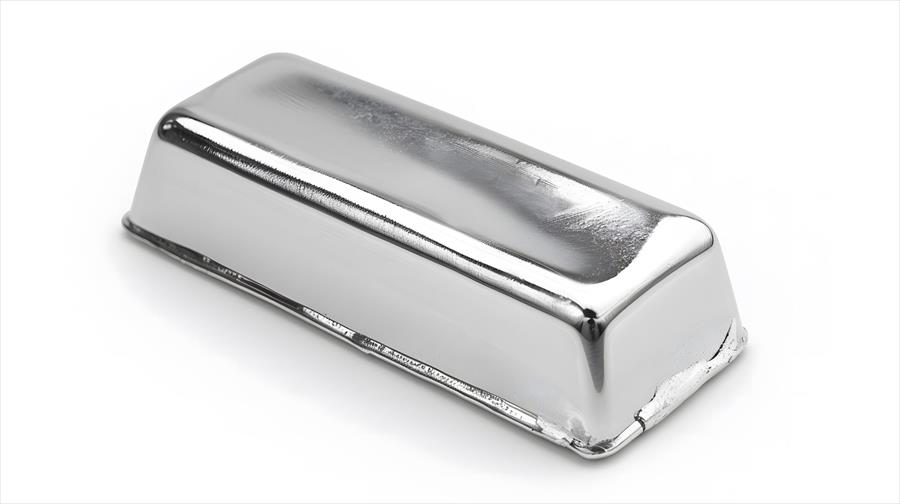How to Identify Genuine Platinum Bars: A Comprehensive Guide
Platinum is one of the most valuable and sought-after precious metals, and it’s often used in jewelry, industrial applications, and investment-grade bars. Given its high value, counterfeit platinum bars aren’t uncommon in the market. If you’re an investor or a collector, knowing how to determine the authenticity of a platinum bar is crucial. In this guide, the precious metals experts from First National Bullion, the platinum, silver, and gold dealers Scottsdale collectors rely on for outstanding quality and service, walk you through various methods to verify a platinum bar’s genuineness.
Understanding the Basics of Platinum Bars
Before diving into the methods of verifying authenticity, it’s important to understand what a genuine platinum bar should look like. Platinum bars typically come in various sizes and weights, ranging from 1 gram to 1 kilogram or more. Reputable mints and refineries produce these bars, and each should have specific markings, including:
- Purity level (usually 99.95 percent or higher)
- Weight in grams or ounces
- Mint or refinery name
- Serial number
Knowing these basics will help you identify the legitimate features of a platinum bar, which is the first step in detecting a fake.
Visual Inspection
A thorough visual inspection can provide initial clues about whether a platinum bar is real or fake. Here’s what to look for:
- Markings and engravings – Check for proper markings such as the purity level, weight, and mint name. These should be clear, precise, and not blurred or smudged. Any inconsistency in these markings could indicate a counterfeit product.
- Font and spacing – Counterfeit bars often have uneven spacing between letters or poorly executed engravings. Compare these details with a verified authentic platinum bar to spot discrepancies.
- Surface texture – Authentic platinum bars usually have a smooth, high-quality finish. A rough or grainy texture might be a red flag.
Weight & Dimensions Check
Platinum is a dense metal with a specific gravity of around 21.45 g/cm³. This density is higher than most metals, so a genuine platinum bar should feel heavier than expected for its size. To verify the authenticity:
- Weigh the bar – Use a precise digital scale to weigh the bar and compare it to the stated weight. If there’s any significant discrepancy, the bar may be fake.
- Measure Dimensions — Use calipers to measure the bar’s length, width, and thickness.
Compare these measurements with the manufacturer’s specifications. A mismatch could indicate a counterfeit.
Magnet Test
One of the simplest tests to perform at home is the magnet test. Platinum isn’t magnetic, so if the bar is attracted to a magnet, it’s not pure platinum. However, some metals used in counterfeits are also non-magnetic, so while this test is a good initial check, it shouldn’t be the only method you rely on.
Sound Test (Ping Test)
The sound test, also known as the “ping test,” involves striking the platinum bar lightly with another metal object. Genuine platinum produces a distinct high-pitched ringing sound that lasts longer than the dull thud of a counterfeit bar made from a different metal. Keep in mind this test requires experience and may not be suitable for everyone.
Acid Test
An acid test can provide more definitive results, although it involves handling potentially dangerous chemicals. Platinum is highly resistant to most acids, including nitric acid. To perform an acid test:
- Purchase a platinum testing kit that includes nitric acid.
- Scratch a small inconspicuous area of the bar.
- Apply a drop of nitric acid to the scratched area.
- Observe the reaction. If the metal reacts and changes color, it’s not platinum. If there’s no reaction, the bar is likely genuine.
Due to the risks involved, it’s recommended to perform the acid test under professional guidance or take the bar to a professional jeweler or appraiser.
Ultrasound Test
Ultrasound testing is a nondestructive method that uses sound waves to measure the bar’s internal structure. Authentic platinum bars have a unique sonic signature due to their density. This test requires specialized equipment and is typically performed by professionals. If you’re serious about verifying a high-value platinum bar, consider visiting a reputable testing facility.
X-Ray Fluorescence (XRF) Spectroscopy
X-ray fluorescence (XRF) spectroscopy is one of the most accurate and reliable methods to determine the authenticity of a platinum bar. XRF machines can analyze the metal’s composition without causing any damage. This method provides a detailed breakdown of the elements present in the bar, allowing you to confirm its purity. XRF testing is usually available at specialized testing centers, pawn shops, and some jewelry stores.
Professional Appraisal
If you have any doubts about the authenticity of a platinum bar, it’s wise to seek a professional appraisal. A certified jeweler or metal analyst can use multiple methods to verify the bar’s authenticity and provide you with a certificate of authenticity if it’s genuine. This is especially crucial if you plan to sell the bar or include it in a larger investment portfolio.
Purchasing from Reputable Dealers
The best way to avoid counterfeit platinum bars is to purchase them from reputable dealers and mints. Look for well-known dealers with good reviews and a solid reputation. Verify the dealer is certified by industry organizations such as the London Bullion Market Association (LBMA) or the Professional Numismatists Guild (PNG). Reputable dealers will also provide certificates of authenticity and buy-back guarantees.
Serial Numbers & Certificates of Authenticity
When purchasing a platinum bar, make sure it comes with a certificate of authenticity that includes a unique serial number. You can often verify this number with the mint or dealer that produced the bar. Counterfeiters may copy serial numbers, but checking the validity of the certificate directly with the issuing authority can confirm the bar’s authenticity.
Ensuring the authenticity of a platinum bar is crucial for investors and collectors alike. By conducting a combination of visual inspections, weight checks, magnetic tests, and advanced testing methods like XRF spectroscopy, you can confidently determine whether a platinum bar is real or fake. Always prioritize buying from reputable dealers and consider seeking professional verification when in doubt. Taking these precautions will help you protect your investment and avoid the pitfalls of counterfeit platinum.
Whether they’re veteran platinum collectors or investors looking to buy silver bars, Scottsdale residents should reach out to the experts at First National Bullion. We offer a huge selection of platinum, gold, and silver items. Scottsdale collectors who are looking for the finest-quality coins, bars, and bullion should give us a call to speak with one of our precious metals experts.
The statements made in this blog are opinions, and past performance is not indicative of future returns. Precious metals, like all investments, carry risk. Precious metals and coins may appreciate, depreciate, or stay the same in cash value depending on a variety of factors. First National Bullion does not guarantee, and its website and employees make no representation, that any metals for sale will appreciate sufficiently to earn the customers a profit. The decision to buy, sell, or borrow precious metals and which precious metals to purchase, borrow, or sell are made at the customer’s sole discretion.


